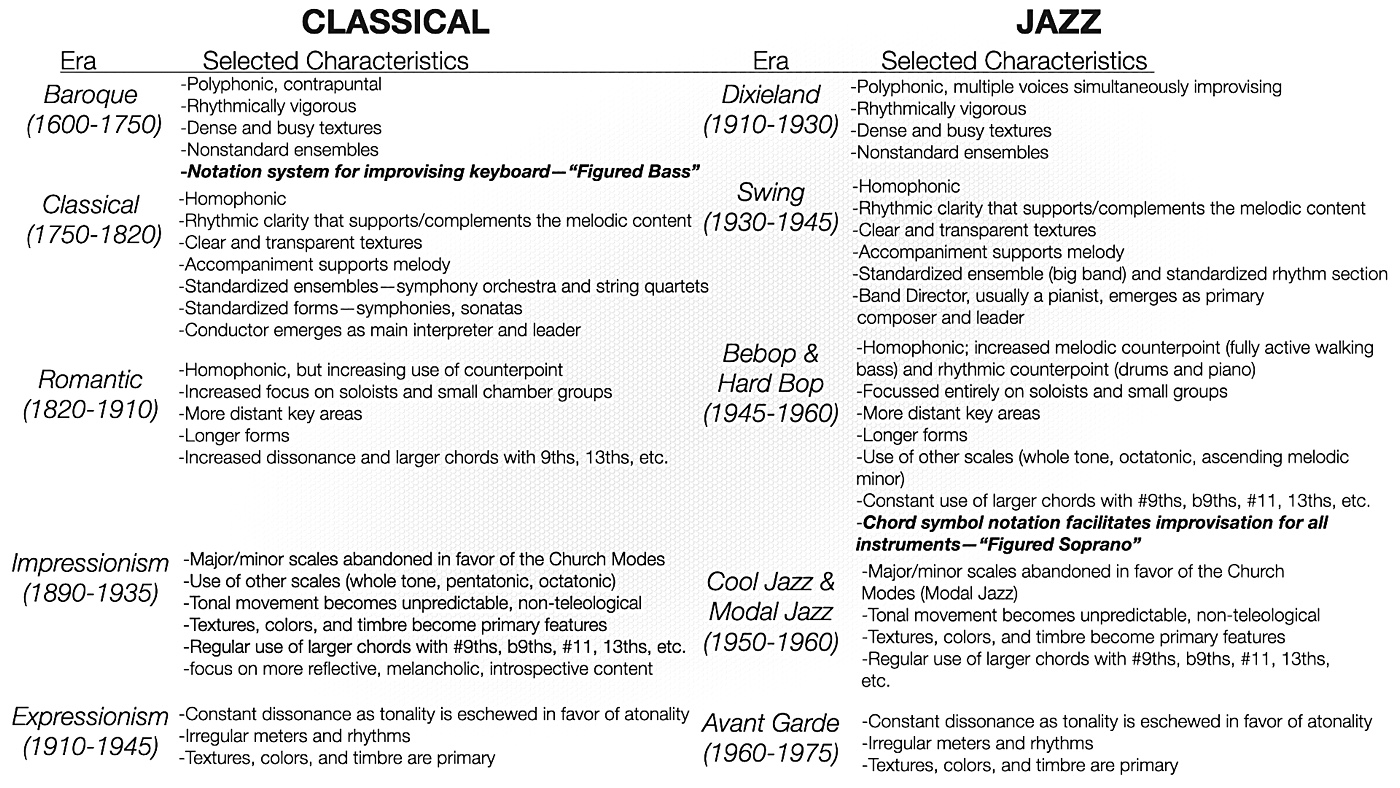
Classical music generally follows a set of rules and parameters, but on the other hand, jazz is about improvisation.
Jazz musicians often use chord progressions and melodies borrowed from classical music, but they add their unique flair.
The differences between Jazz and Classical are numerous and cannot be fully covered in a few sentences. Therefore, I will cover only one point of difference, which is significant to me: the time frame within which each discipline has evolved.
Most folks consider classical music to begin with the Renaissance era (1400 to 1600) and then the Baroque (1600 to 1750), the Classical (1750 to 1820), the Romantic era (1810 to 1910), and finally, the 20th-century Classical music. This time frame alone affirms “Classical music” as the supreme music of our Western European traditions.
Over 600 years of traditions and conditioning have turned what was once popular music of the time into revered Art music. Let us compare this with Jazz: Its genesis is generally accepted to have taken place during the last decade of the 1800s (around 1895). Ragtime / Blues and Dixieland (1895 to 1920), Trad Jazz, and the beginning of what was later called symphonic Jazz (Gershwin) would emerge in 1920. The Swing era began in 1930 with the apparition of some of the most famous Jazz Big Bands (Duke Ellington, Count Basie, and Benny Goodman, to name a few).
It was promptly followed by the Bebop era of the 1940s (Charlie Parker, Dizzy Gillespie, Thelonious Monk, etc., then by the hard Bop era of the 1950s (Cannonball Adderley, Sonny Rollins, Clifford Brown) and the Cool school era (Miles Davies, Dave Brubeck, Stan Getz); the early 1960s saw the birth of free jazz (John Coltrane, Ornette Coleman, Don Cherry); Latin Jazz (Tito Puente, Antonio Carlos Jobim) and Fusion (Miles Davis, Weather Report, Herbie Hancock, Frank Zappa) would then appear on the scene from the late 60s and the 1970s. The Jazz rock and Funk movement (Joe Zawinul, Chick Corea, The Brecker Brothers) would cover the 1970s and 80s), followed by Smooth Jazz (Grover Washington, David Sanborn, Dave Koz), Acid Jazz and Mbase (Donald Byrd, St Germain, Steve Coleman) would conclude the century.
From 2000 onwards, no one style has dominated any other. Jazz has therefore developed over a significantly shorter period than Classical music (about 120 years versus 600 years). Over these 120 years, Jazz has nonetheless covered musical grounds that are staggeringly impressive. Like Classical Music, jazz has earned its stripes and is now regarded as Art music of the highest degree. Some people will argue that Classical music is serious when Jazz isn’t based on the simple fact that Classical music is so much older than Jazz. This could not be further from the truth. Both types of music are worthy of regard and appreciation. Both music deserves study and respect. Both kinds of music have differences but also many parallels and similarities that cannot be ignored. Let us all enjoy the beauty of music as a whole.